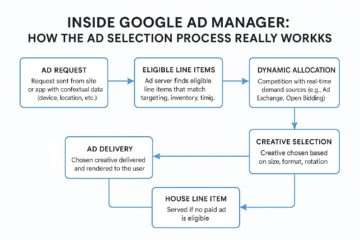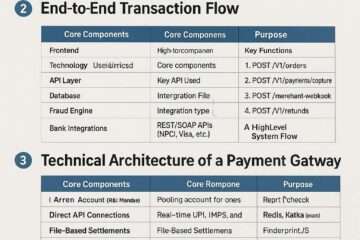

On May 3, 2025, Google announced it would phase out the “Video Games (Casual & Online)” sensitive category from its AdSense Blocking Controls, effective May 15, 2025, with existing blocks ceasing to function by June 15, 2025. This change marks a significant shift in how publishers manage gaming-related ads within Google’s advertising ecosystem, prompting questions about its implications for the gaming industry, advertisers, and publishers. This article explores the decision, its immediate and long-term impacts, and the future trajectory of gaming advertisements in light of this development.
Understanding the Decision
Google’s AdSense Blocking Controls allow publishers to filter out specific ad categories deemed “sensitive” due to their content or business nature, such as Sensationalism, Significant Skin Exposure, or, until recently, “Video Games (Casual & Online).” The “Video Games (Casual & Online)” category specifically targeted ads related to video games, online games, and downloadable games but excluded video game consoles. Publishers could use this category to prevent such ads from appearing on their sites or specific inventory, aligning with their brand safety preferences or audience expectations.
The decision to sunset this category means publishers will no longer have a dedicated tool to block gaming-related ads under this specific label. Instead, they must rely on broader general categories like “Video Games, Consoles & Accessories” or “Online Games & Puzzles” to manage similar content. Google has framed this as part of its ongoing efforts to refine its ad categorization system, suggesting a streamlining of controls to better align with evolving advertising needs.
The phase-out process is structured as follows:
- May 15, 2025: The category will be removed for publishers without existing blocks, and those with blocks will see a “Deprecated” label applied.
- June 15, 2025: Existing blocks using this category will cease to function, requiring publishers to reconfigure their settings.
Publishers who do not currently use this category need not take action, but those relying on it have a one-month window to adjust their configurations. Google recommends regularly reviewing brand safety settings to ensure alignment with publishers’ goals.
Immediate Impacts
1. Increased Exposure to Gaming Ads
The most immediate effect is that publishers who previously blocked “Video Games (Casual & Online)” ads will likely see an influx of gaming-related advertisements unless they reconfigure their controls using alternative categories. This could lead to a surge in ad impressions for casual and online games, which dominate mobile gaming—a sector with 3.32 billion active gamers globally. For advertisers, this presents an opportunity to reach broader audiences, particularly in casual gaming, where 200 million daily players engage with non-intrusive ad formats like rewarded videos and interstitials.
However, this increased exposure may not be universally welcomed. Publishers catering to niche audiences or maintaining strict brand safety standards may find gaming ads misaligned with their content. For example, a site focused on educational content might inadvertently display ads for hyper-casual games, potentially alienating its audience. The reliance on broader categories like “Online Games & Puzzles” may lack the granularity needed to filter out specific gaming subgenres, complicating brand safety efforts.
2. Operational Adjustments for Publishers
Publishers using the deprecated category must act swiftly to update their AdSense settings. The one-month transition period (May 15 to June 15, 2025) provides limited time to test and implement new blocking strategies. For those managing multiple sites, the process varies slightly depending on whether changes apply to individual sites or an entire portfolio, adding complexity.
This shift underscores the importance of proactive brand safety management. Publishers unfamiliar with general category options may struggle to replicate the precision of the “Video Games (Casual & Online)” filter, potentially leading to unintended ad placements. Google’s recommendation to review configurations regularly highlights the dynamic nature of ad management but places the onus on publishers to adapt.
3. Advertiser Opportunities and Challenges
For advertisers, the removal of this category could reduce barriers to reaching gaming audiences, particularly in the casual and mobile segments, which dominate ad spend. Hyper-casual games alone captured 34.4% of ad buys in the casual gaming category in 2024, driven by video ads that account for nearly 70% of ad formats. With fewer publishers blocking these ads, advertisers may see improved reach and engagement, especially in regions like North America and EMEA, where video ads are prevalent.
However, advertisers must navigate potential backlash. If gaming ads appear on sites where they clash with content or audience expectations, brand perception could suffer. The absence of a specific blocking category may also increase competition for ad inventory, driving up costs in high-demand gaming segments. Advertisers will need to leverage advanced targeting—using player behavior, demographics, and contextual data—to ensure ads remain relevant and effective.
Long-Term Impacts
1. Shift in Ad Categorization Philosophy
Google’s decision reflects a broader trend toward simplifying and generalizing ad categorization. By consolidating controls, Google may be aiming to reduce complexity for publishers while aligning with the evolving gaming landscape, where boundaries between casual, hyper-casual, and hardcore gaming are blurring. The rise of cross-platform gaming and hybrid monetization models (combining in-app purchases and ads) suggests that a one-size-fits-all category like “Video Games (Casual & Online)” may no longer capture the market’s diversity.
This shift could pave the way for more nuanced categorization in the future, potentially incorporating AI-driven contextual targeting or genre-specific filters. For instance, separating ads for hyper-casual games (e.g., Candy Crush) from those for midcore strategy games (e.g., Clash of Clans) could offer publishers greater control. However, until such innovations emerge, publishers may face a period of adjustment, balancing broader ad exposure with brand safety.
2. Growth of In-Game Advertising
The sunsetting of this category aligns with the growing prominence of in-game advertising, projected to reach $94.53 billion in 2023 and continue expanding in 2025 with a 3.2% year-over-year growth rate. Google’s own entry into in-game ads via AdMob, announced in 2024, underscores its commitment to this space. AdMob’s immersive ad formats, such as banners on in-game objects, cater primarily to mobile games but are expanding to 3D environments like Roblox.
The removal of the blocking category could accelerate this trend by increasing ad inventory availability. Casual and hyper-casual games, which rely heavily on ad monetization, stand to benefit most. Rewarded video ads, which 72% of mobile gamers engage with willingly, and interstitial ads, common between levels, are particularly effective in these genres. As publishers adapt to new controls, advertisers may invest more in non-disruptive formats that enhance player experiences, such as blended in-game ads or audio ads.
3. Evolving Publisher Strategies
Publishers will need to adopt more sophisticated strategies to manage gaming ads. The shift to general categories may encourage greater reliance on AdTech platforms that offer seamless integration and real-time targeting. For example, platforms like GumGum and Frameplay have demonstrated success with intrinsic in-game ads, achieving significant brand lift for campaigns like Hershey’s Oh Henry! (15.9-point lift in mobile ad recall). Publishers may also explore building custom AdTech solutions to maintain control over ad placements, especially in VR/AR environments, which are poised for growth.
However, the risk of ad clutter looms large. If gaming ads flood sites without proper filtering, user experiences could suffer, leading to backlash. Research shows 69% of gamers are open to non-disruptive ads, but disruptive formats could erode trust. Publishers must balance monetization with user satisfaction, prioritizing ad formats that integrate seamlessly into content.
Future Trajectory of Gaming Ads
The sunsetting of the “Video Games (Casual & Online)” category is a microcosm of broader trends shaping the gaming ad landscape. Here’s what the future holds:
1. Rise of Immersive and Contextual Ads
As gaming evolves, so will ad formats. Blended in-game ads, which integrate seamlessly into game environments (e.g., billboards in racing games), are gaining traction for their high viewability (99% in gaming vs. 88% for online video). Contextual targeting, powered by AI, will enable advertisers to align ads with game genres, player moods, and demographics, enhancing relevance. For example, casual games like Words with Friends attract older, female players, offering unique targeting opportunities.
Emerging technologies like augmented reality (AR) and virtual reality (VR) will further expand ad possibilities. Early successes like Pokémon Go highlight AR’s potential to blend digital and physical worlds, while affordable VR headsets could democratize immersive ads for at-home audiences. Advertisers will need to stay ahead of these trends, investing in creative formats that respect player immersion.
2. Data-Driven Targeting and Measurement
The gaming industry’s data-rich environment—encompassing player profiles, in-game behavior, and device information—will drive more precise targeting. Partnerships with measurement firms like DISQO, which analyze brand lift and purchase intent, will help advertisers prove ROI. As privacy regulations tighten, first-party data and contextual insights will become critical, reducing reliance on third-party cookies. Google’s AdMob enhancements, such as real-time bidding and A/B testing tools, reflect this shift toward data-driven monetization.
3. Diversification of Gaming Audiences
The gaming audience is no longer a monolith. With 86% of players engaging in mobile gaming weekly and a near-even gender split, advertisers can target diverse segments, from young casual players to older strategy gamers. Misconceptions about gamers (e.g., as primarily young males) are fading, encouraging brands to explore gaming as a mainstream channel. Campaigns like Johnsonville’s, which saw a 13.7-point lift in purchase likelihood via casual game ads, demonstrate the potential for broad appeal.
4. Regulatory and Ethical Considerations
As in-game advertising grows, so will scrutiny. Google’s 2022 policy changes targeting intrusive ads in hyper-casual games highlight the need for user-friendly ad experiences. Future regulations may impose stricter guidelines on ad frequency, transparency, and data usage. Advertisers and publishers must prioritize ethical practices, ensuring ads enhance rather than detract from gameplay. The Interactive Advertising Bureau’s updated viewability standards for in-game ads, which Google supports, signal industry-wide efforts to maintain trust.
Conclusion
Google’s decision to sunset the “Video Games (Casual & Online)” category in AdSense Blocking Controls is a pivotal moment for the gaming ad ecosystem. While it creates immediate challenges for publishers adjusting to new controls, it also opens opportunities for advertisers to tap into gaming’s massive, engaged audience. The move reflects broader trends toward streamlined ad categorization, immersive formats, and data-driven targeting, setting the stage for a dynamic future in gaming ads.
Publishers must adapt by leveraging general categories and AdTech platforms to maintain brand safety, while advertisers should seize the chance to explore non-disruptive formats like rewarded videos and blended ads. As technologies like AR, VR, and AI reshape gaming, the industry will need to balance innovation with user experience, ensuring ads enhance rather than interrupt play. By navigating these changes thoughtfully, stakeholders can capitalize on gaming’s untapped potential as a leading advertising channel in 2025 and beyond.

























































